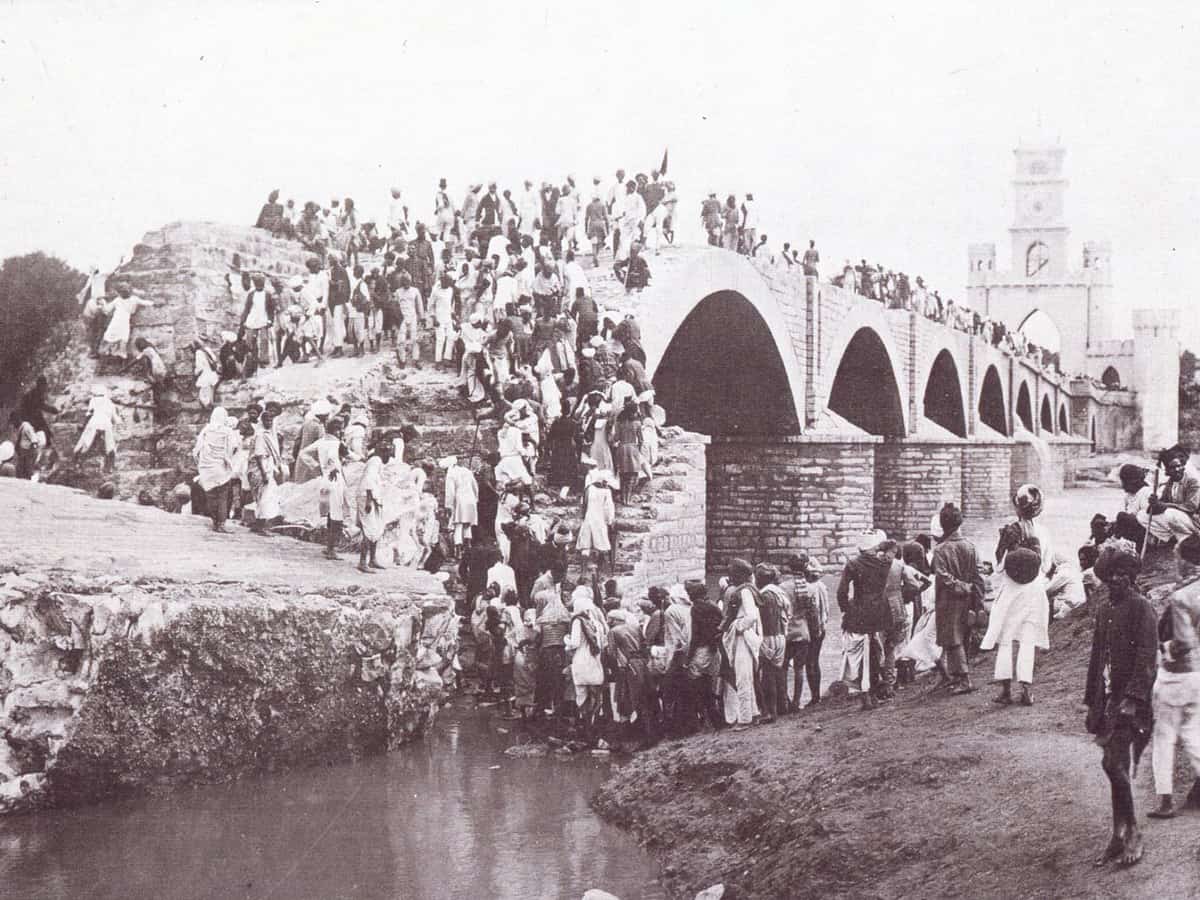
Hyderabad: Who wouldn’t like to groove to the catchy ‘Come September’ tune? But people in Hyderabad will think twice. For many come September and memories of the dance of death played by the Musi floods come home to haunt. Put the clock back by 114 years and the horrors of the devastation caused by the cataclysmic floods become clear.
It was on September 28, 1908, that the city had its brush with one of the severest of storms. The Musi River burst its banks and the flood water laid bare everything in its way. But in retrospect, the calamity proved a blessing in disguise. The days that break you, are the days that make you. The great Musi floods turned out to be a precursor to progress and heralded the planned development of Hyderabad.
Osman Sagar and Himayat Sagar are among the host of projects that came up in the wake of the disastrous floods. So was the City Improvement Board (CIB) also called ‘Aaraish-e-Balda’. It was set up by the 7th Nizam, Mir Osman Ali Khan, in 1914 for the planned development of Hyderabad. The tragedy also gave Hyderabad one of its finest poets.

Amjad Hyderabadi had lost his mother, wife and daughter to the floods, but he survived to emerge as the master of Rubaiyat (quatrains). Nothing describes the horrors of the floods the way he captured the calamity in his poem, Qayamat-e-Soghra (The Minor Doomsday). Sample the touching nazm:
Wo raat ka sannata wo ghanghore ghatain
(The sepulchral silence of night, the sinister clouds
Barish ki lagatar jhadi, sard hawain
Girna wo makanon ka, wo cheeqon ki sadain
Wo mangna har ek ka ro-ro ke duain
The unrelenting rain, the freezing winds
The uprooting of houses, the screaming sounds
Praying with teary eyes, anguished minds)
About his own miraculous escape from the jaws of death, Amjad wrote sarcastically:
Itni darya main bhi na duba Amjad
(In this deluge also Amjad couldn’t drown
Dubne walon ko bus ek chullu kafi hai
Whilst a handful of water is enough to sink many)
Such was the massive destruction wrought by the floods that old Hyderabadis still call September as ‘sitamgar’.
What exactly led to the 1908 floods?
According to the engineering wizard, Mokshagundam Visvesvaraya, the flood was the result of bursting of several irrigation tanks due to unusually heavy precipitation over an extensive area. There is no record of the intensity of the downpour, but it was ‘exceptionally heavy rain’, everyone agrees. The rain ‘descended in sheet, flooded small tanks and overburdened their waste weirs’.
The catastrophic event was set in motion on September 26 when the city experienced a sharp shower and drizzle. Then it turned into a heavy downpour that lashed all through the night leading to 6 inches of rainfall. Two days later the first serious warning was sounded when water flowed over the Purana Pul and breached the city rampart wall on the western side. By 6 am, the water level rose alarmingly to 10 feet and touched the crown arch of Afzal Bridge along Kolsawadi, the place where the Osmania General Hospital now stands. The skies enacted a day-long catharsis and like a one-eyed monster, the water swirled and pulsated. The flood level rose by the minute. In just three hours, the water rose to a height of 16 ft., overtopping the parapet walls of Purana Pul, Muslim Jung Pul, Chaderghat and Afzal Bridge. The latter disappeared without a ripple.
The day after the deluge, the city presented a picture of devastation – broken homes, uprooted trees, floating corpses and carcasses. About 2,000 persons were washed away in Kolsawadi alone while an equal number died at Ghansi Miyan Bazar. The flood inundated large parts of the walled city rendering thousands of families homeless. About 50,000 lives were believed to have been lost. The city wall came in handy for many to save their lives while some sought refuge on the hoary tamarind tree situated in the Osmania General Hospital. A plaque put up here says: “This tree saved 150 lives.”
Every year on September 28 concerned citizens gather around this tamarind tree to recount the memories of the Musi floods and pay homage to the victims.
Over the years the city has witnessed wet spells of varying intensities in 1994, 2000, 2009, 2016 and 2020. But no lessons have been learnt from the successive floods. In the aftermath of the havoc government promptly sets up review committees. Reports are furnished and then everything is put on the back burner till the next flood. The Kirloskar Committee set up after the 2000 floods identified 13,500 illegal structures on 390 km length of drains. Since then, the encroachments have gone up to nearly 30,000. Every time it rains, the city gets inundated, and citizens are put to untold suffering.
So, are these disasters natural or manmade? In the absence of strong action by the government against the encroachers, one is inclined to conclude that the latter is true.



